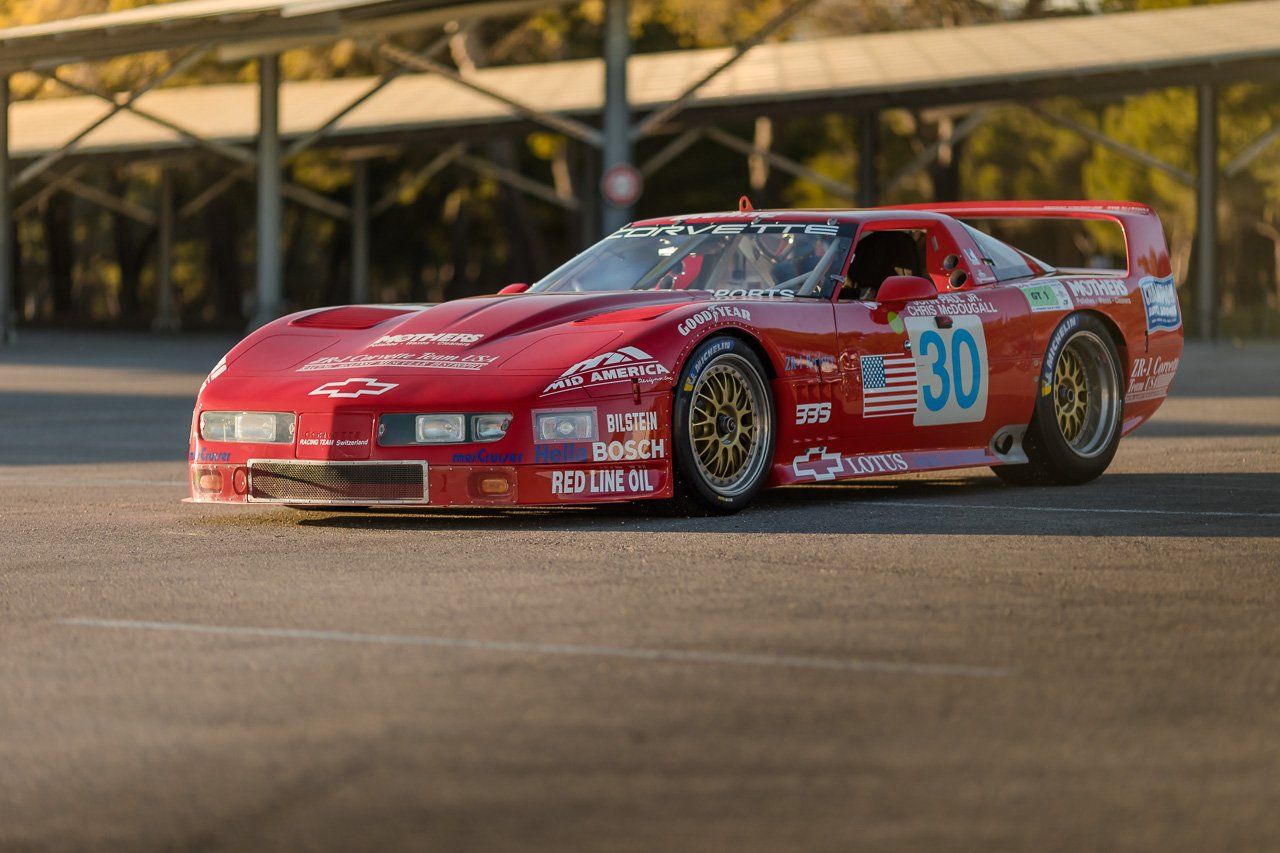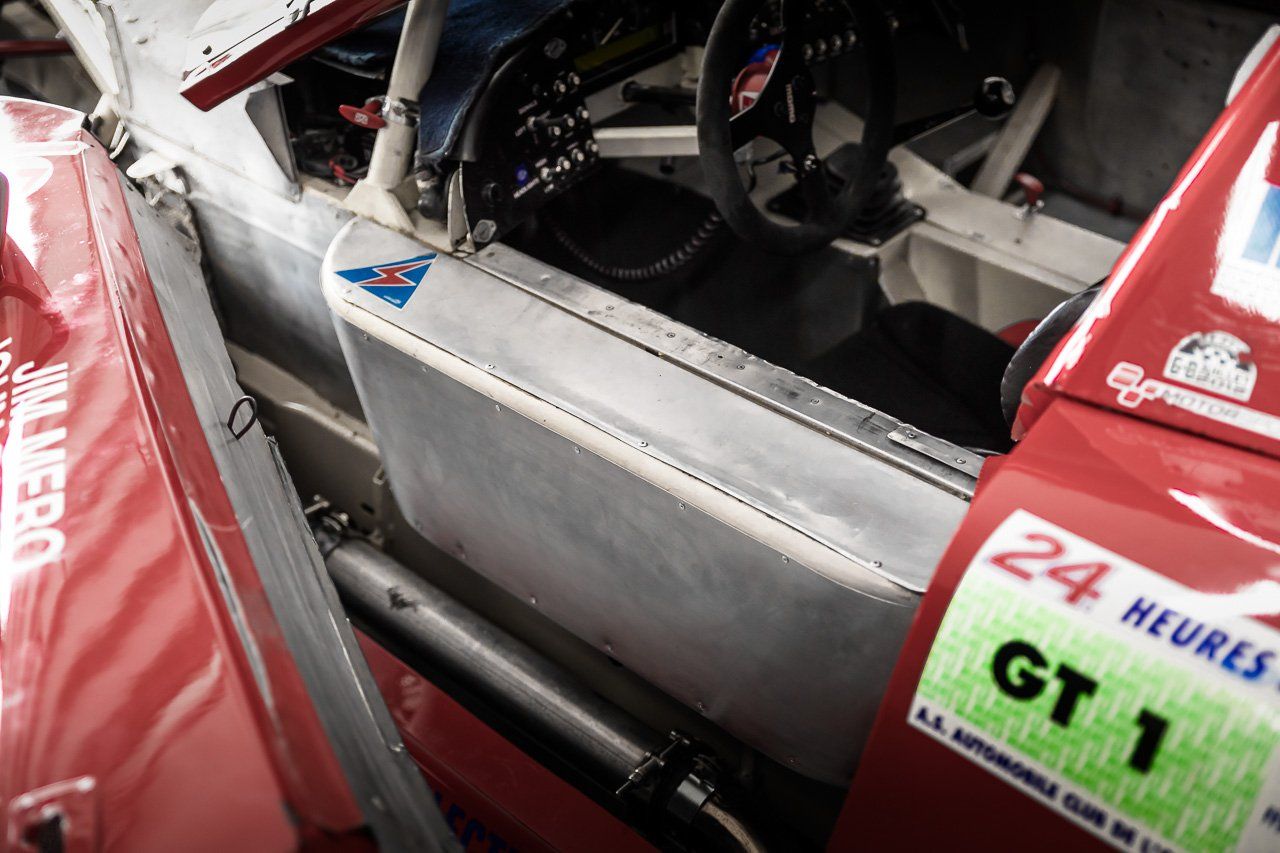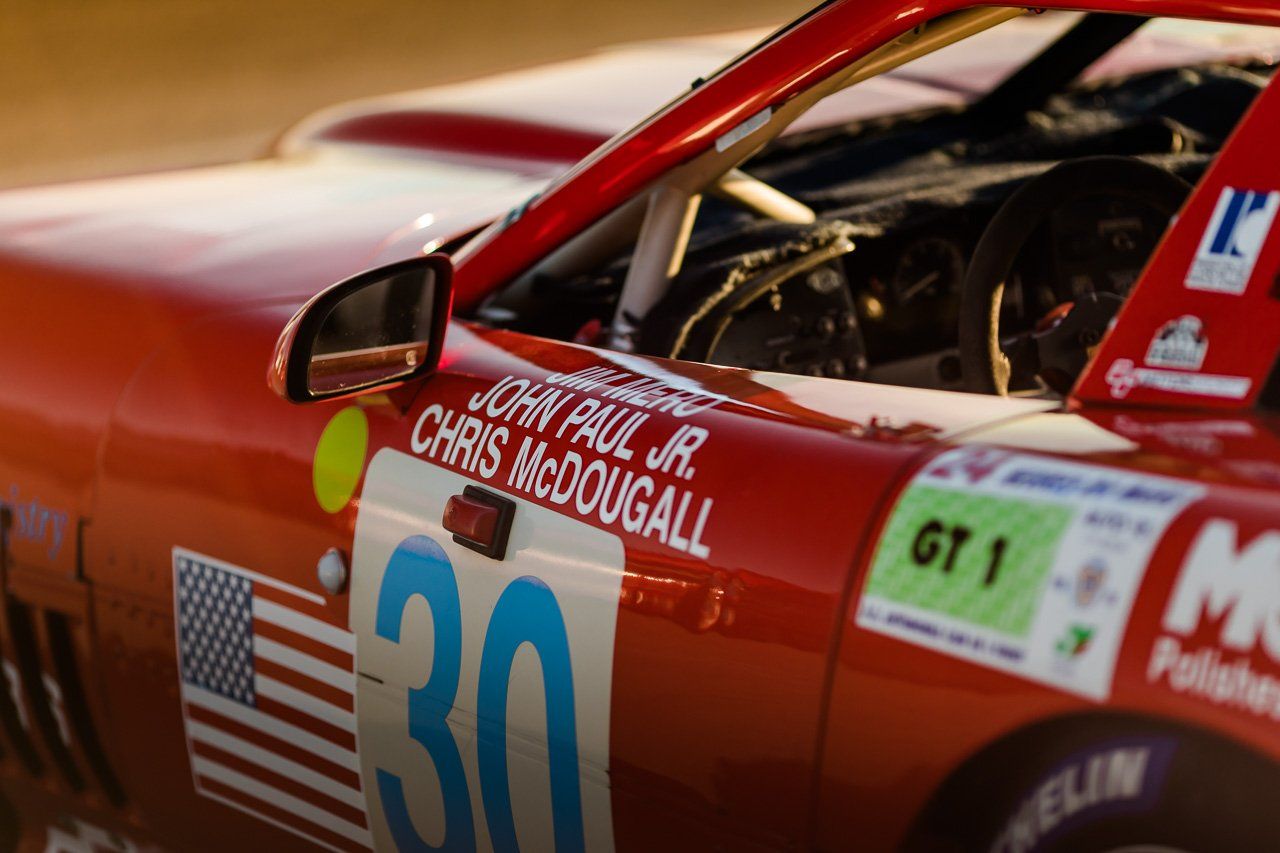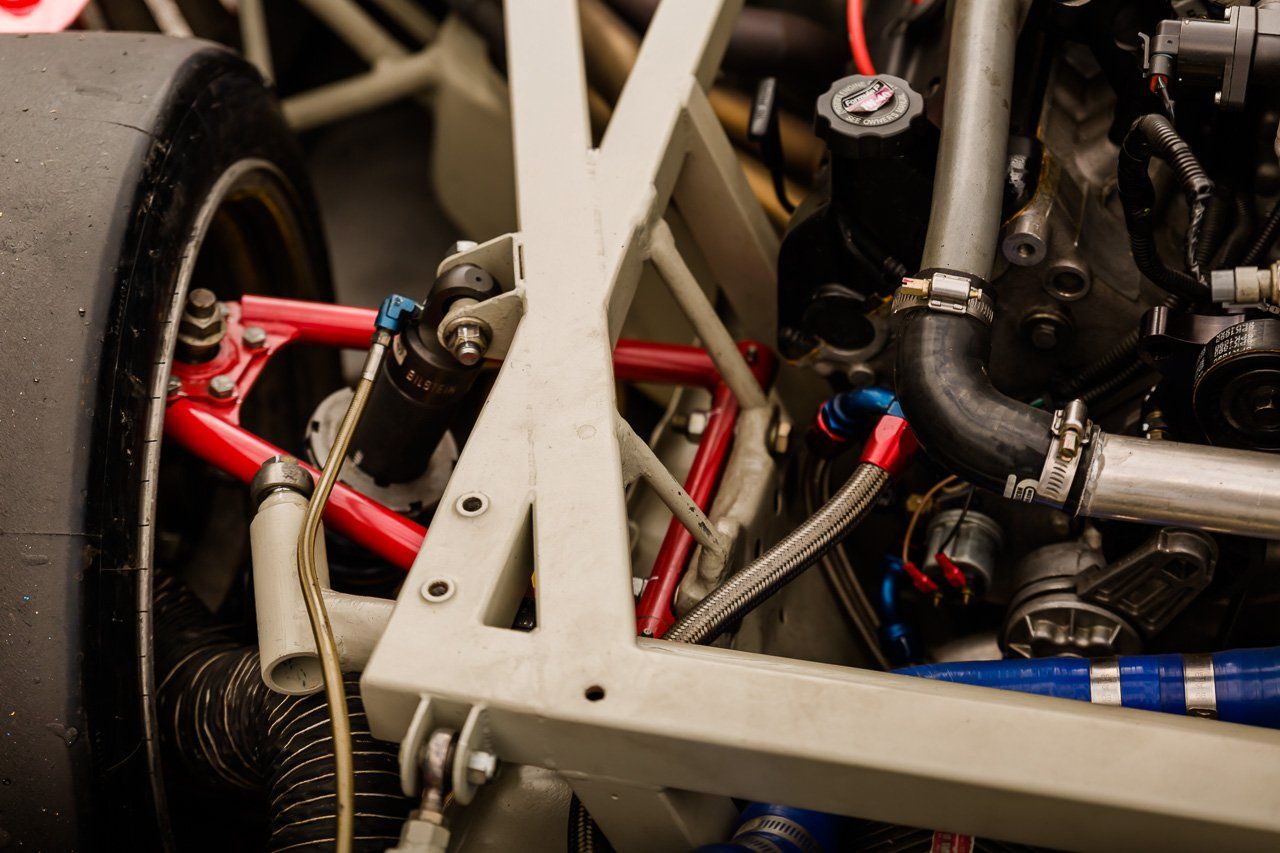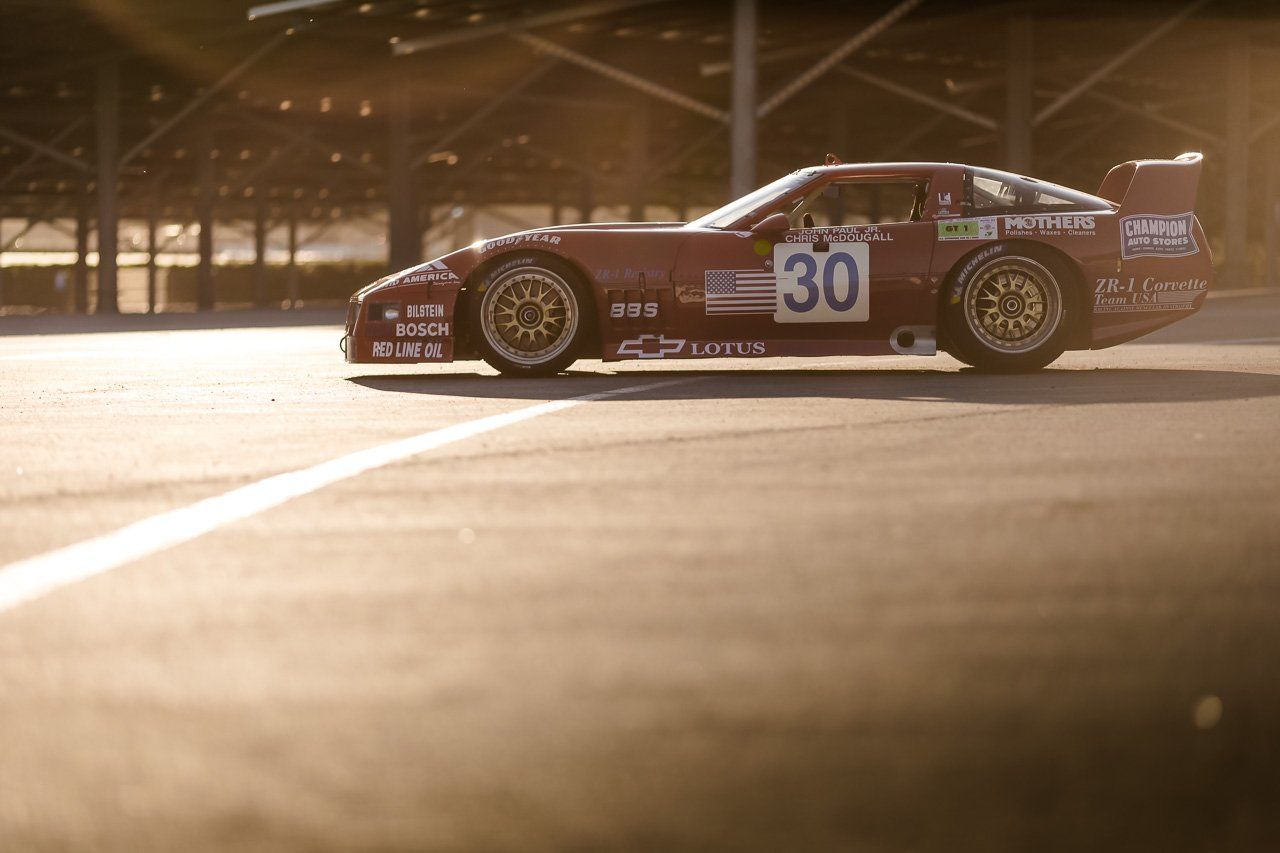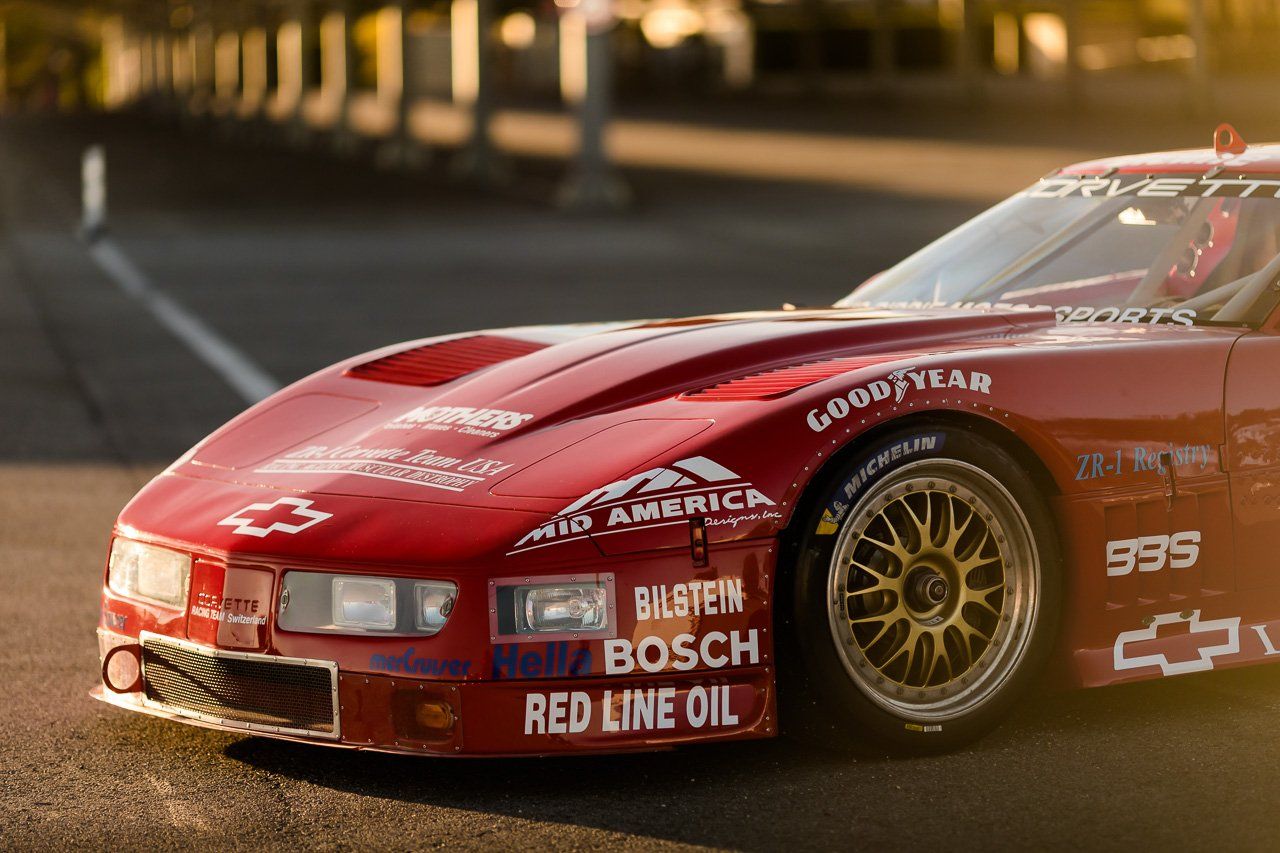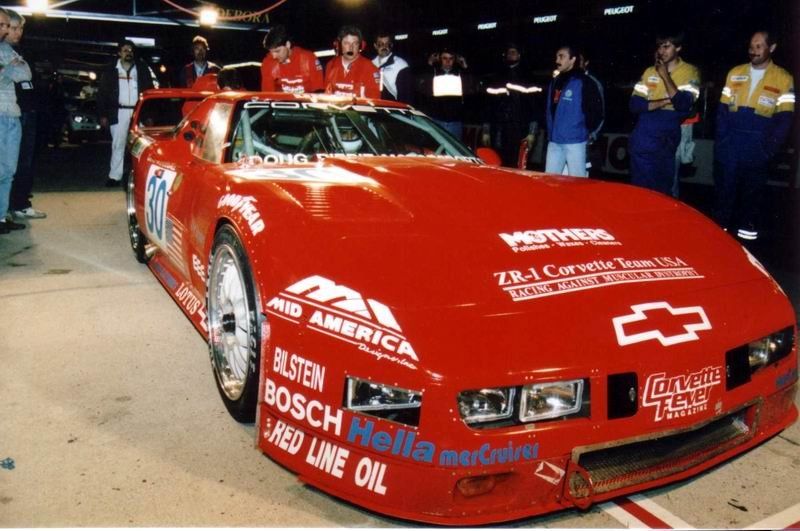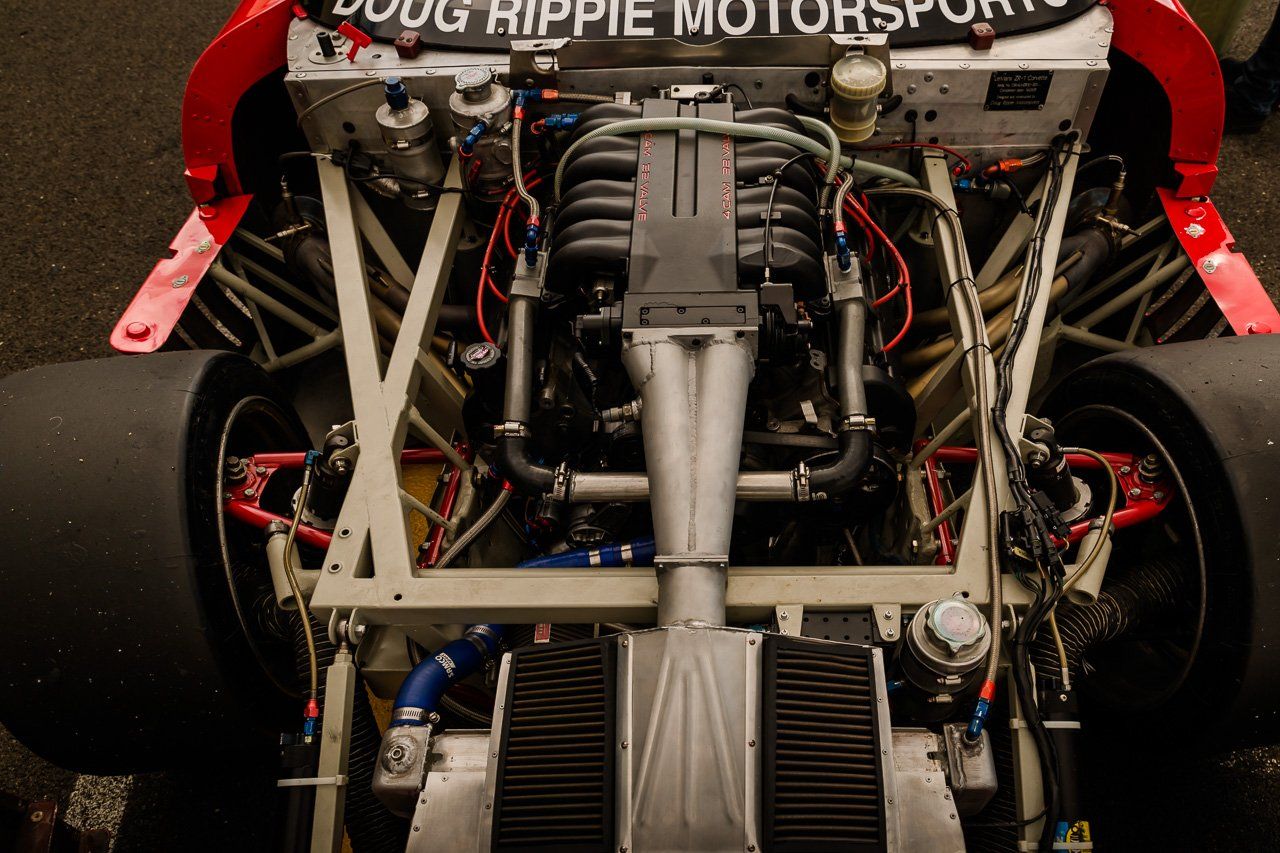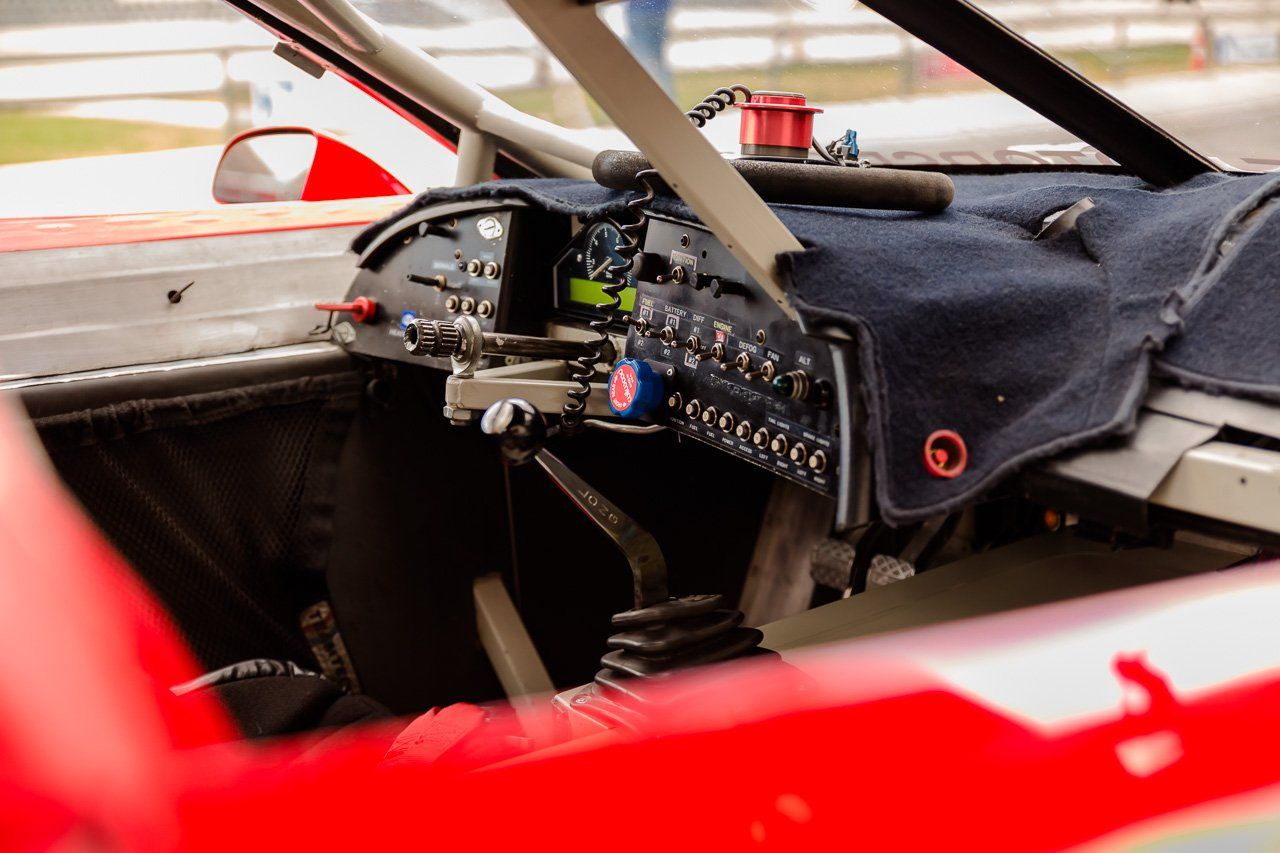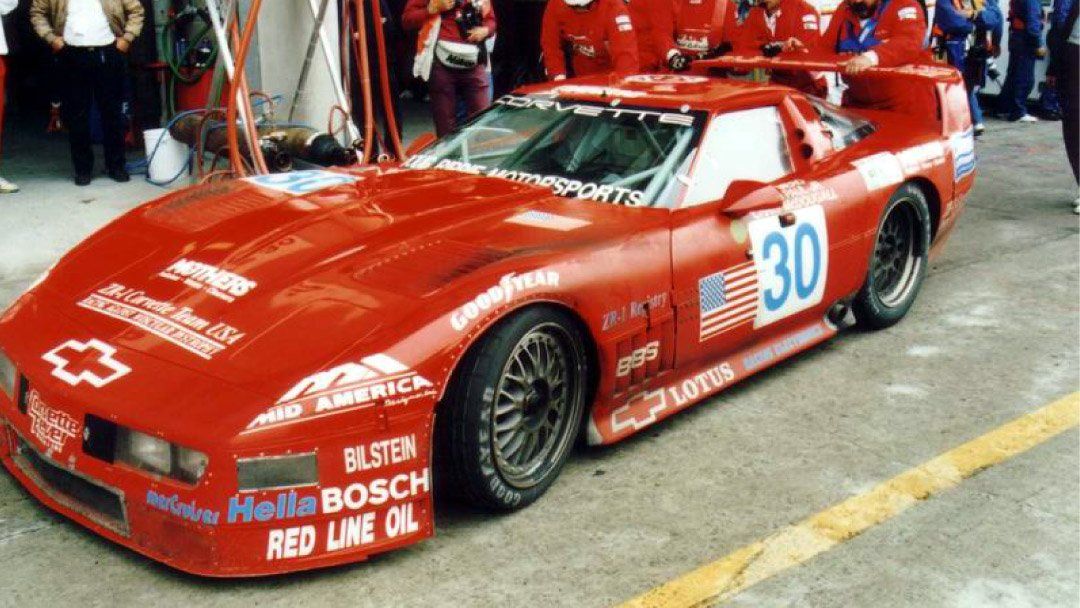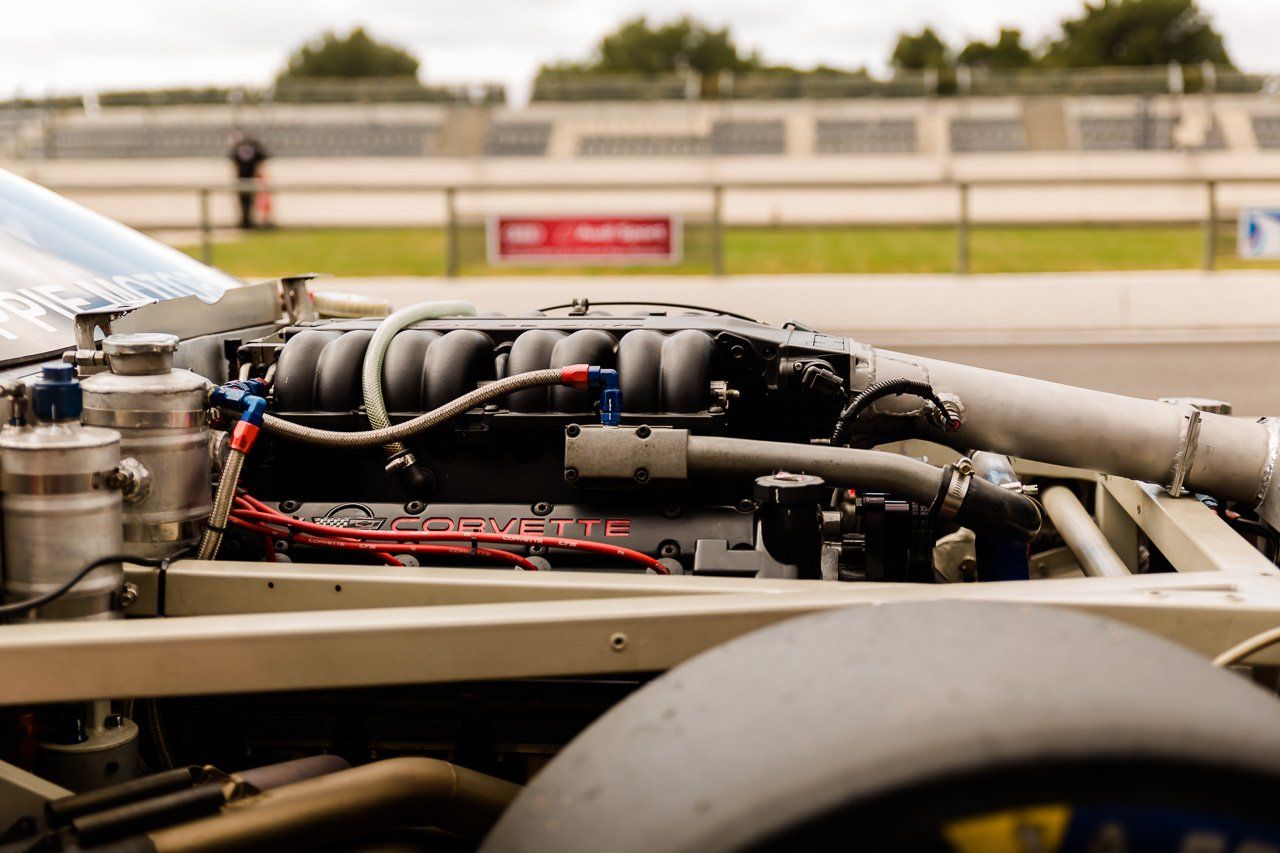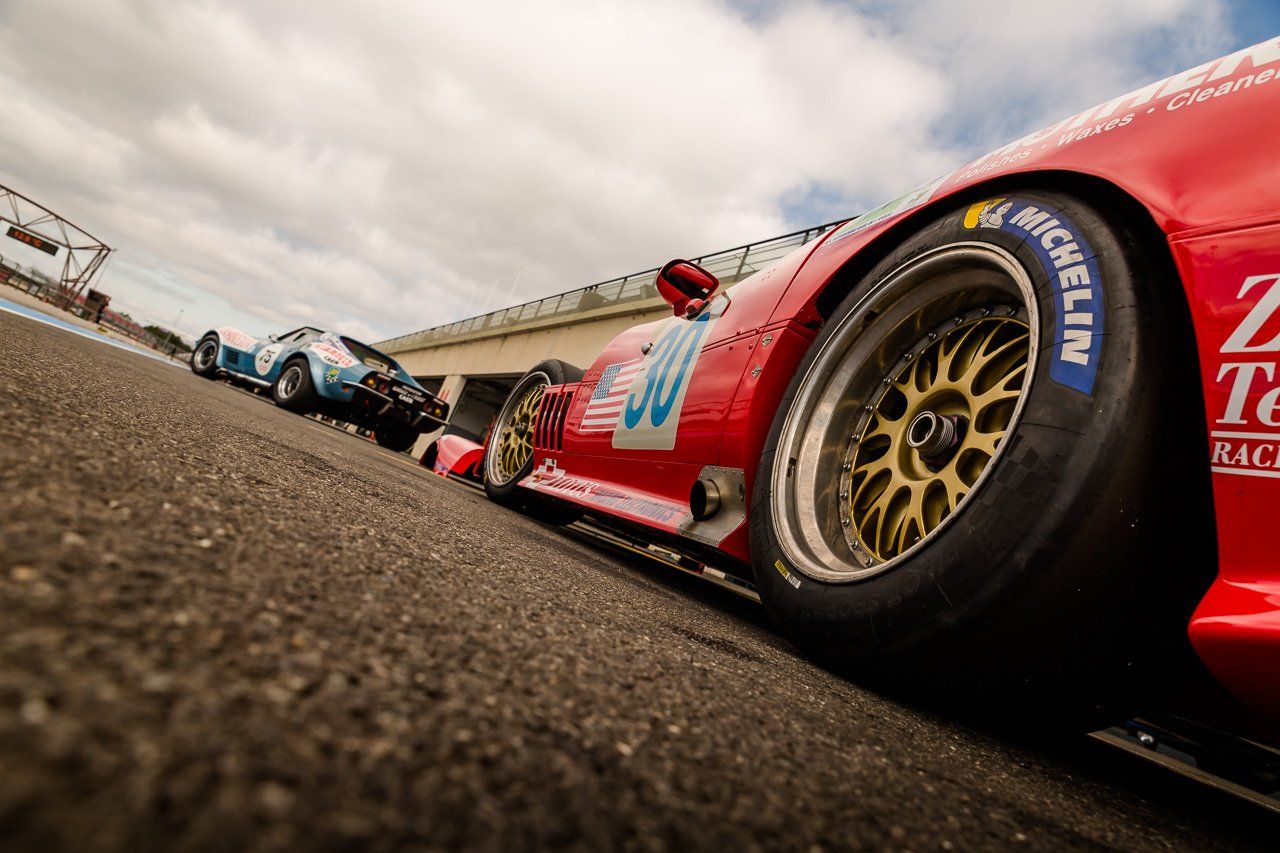The Chevrolet Corvette has always been a popular sight at Le Mans but none raced in the world's most famous endurance race for almost 20 years. Reeves Callaway's team brought America's Sportscar back to Circuit de la Sarthe but it is this, a red C4 ZR1 built by Doug Rippie Motorsport that remains as probably the biggest Corvette oddball in Le Mans history as it was supposed to take on the likes of Ferrari, McLaren, Venturi, and Porsche in the GT1 class of 1995 but never amounted to anything. Nonetheless, the car, freshly restored in its Le Mans war paint can be yours for the price of a brand-new Ferrari 812 GTS with some optional extras.
The Corvette wasn't always synonymous with racing
A Jaguar was prettier and so was a Ferrari, a Maserati, or an Austin-Healey. They were all faster as well and they handled better. But GM wasn't to be deterred and, as the years wore on, the Corvette got better and better although racing wasn't necessarily part of its DNA from the word go.
While GM did get involved in racing throughout the better part of the '50s, the AMA's Resolution against factory-backed racing activities seriously dampened the automotive giant's implication in motorsports which was curtailed completely via the GM's board's directive of January 1963 that all of GM's divisions should step away from racing immediately or face heavy scrutiny from the inside. Indeed, an antitrust investigation was looming over GM's head in the early '60s and perhaps the biggest seller of automobiles in the U.S. (and beyond) wanted to lay low for a while. The thing is, however, that the ban remained in effect for many years and this came at the cost of the Corvette's effectiveness on the track, to some extent.
You see, Ford quit the AMA's Resolution even before GM's ban came and would be behind some legendary racing cars throughout the '60s such as the Shelby Cobra, the Cobra Daytona Coupe, and, of course, the Ford GT40. The Corvette, meanwhile, made its Le Mans debut in 1960 but those early outings in the hands of B.S. Cunningham's team didn't amount to much and, frustratingly, the ban came just as Ford was helping Shelby to improve the AC-based Cobra.
Sure, the C2-based Grand Sport did race but the lack of factory support was evident in its performance and, more to the point, because only a handful had been built, it never battled the Cobra on equal terms as the 'Vette was always thrown into the prototype ranks.
Then, in 1967, the Corvette C2 made its Le Mans debut courtesy of the Dana Chevrolet dealership whose DX Oil-sponsored race program yielded class wins at Daytona and Sebring. The car, complete with its chromed bumpers, was driven on its wheels from Paris to Le Mans and would've won its otherwise depleted class had it not been for a cheap part failing. The following year the Corvette was back but it looked entirely different as the C3 generation had landed and Swiss Scuderia Filipinetti fielded two hardtop coupes followed by a single entry in 1969.
The Corvette kept coming back at Le Mans throughout the first half of the '70s thanks to a number of French enthusiasts such as Henri Greder but it was an American that arguably brought the most famous Corvette of them all. John Greenwood made his way up the SCCA's ranks and ended up winning the 12 Hours of Sebring in the GT ranks in 1971 with TV celebrity Dick Smothers as his co-driver. By then, John's C3 already sported the now-legendary Stars 'n' Stripes livery and the backing from BF Goodrich - that had Greenwood race his cars on street-spec radials - allowed those 'patriotic' Corvettes to make it to Le Mans in 1972 and 1973.
On both occasions, the cars were blindingly quick down Mulsanne surpassing 175 mph (beating even the Ferrari-clothed Corvette of Dave Heinz in 1972) but reliability issues saw them crumble before they could take the fight to the Ferraris and Porsches of the day. Greenwood returned to Le Mans in 1976, supposedly aided financially by the organizers as the fuel crisis had severely affected the race and they wanted some entries that would draw the crowds. That's how both John's widebodied 'Spirit of Le Mans '76' car and Michael Keyser's Monza made it onto the grid. Those tube-frame monsters were the fastest things in IMSA's GT championship but Le Mans was too big a challenge for them. Still, their sonorous V-8s rocked the Le Mans grandstands for a good few laps before everyone focused once again on the Group 5 duel between BMW and Porsche.
While the ACO kept welcoming American cars in a self-explanatory IMSA class all the way through to the early '80s, no Corvette appeared on the grid although another Monza and a few Camaros did make the cut. Then, as Group C took over, the GTs were deemed redundant for almost seven years until they were asked to join the grid once again in 1993. The return of production-based cars to Le Mans was seen as the perfect opportunity to race at Le Mans by long-standing GM tuner Reeves Callaway who concocted the Callaway SuperNatural Corvette. The race version of that long-nosed Corvette (originally a mundane C4 LT1) arrived in 1994 but was slotted in the lower GT division nee GT2. In a class dominated by Porsches, Callaway's 6.2-liter V-8 racer took second and third the following year but few cared to remember as the talk of the town was another Corvette. A Corvette that was meant to battle the big boys.
Doug Rippie built this Corvette from the ground up
"Back in 1970, I wanted to race sprint cars," Doug Rippie remembered in an interview with C&D, "but my mom said, Forget it! It's too dangerous!"
"So I said fine-if I can't race sprint cars, then I'm going road racing." And that's exactly what Rippie did. Years of modifying Corvettes as a hobby turned into a rather lucrative business and by 1984 his family's body shop was sold in order to focus solely on modifying Corvettes. Doug Rippie Motorsport as it's known today was established in 1992 and the car you see here took shape even before the company had celebrated its third birthday.
The base for the wasn't an LT1-engined C4, like in the case of the Callaway, but the Lotus-tuned ZR-1 that featured the 32-valve, four-cam, variable intake, all-aluminum 5.7-liter LT5. Rated at 375 horsepower, the LT5 V-8 was a good starting point but Rippie had something better up his sleeve: the so-called 'Black Widow', a modified LT5 V-8 that was co-developed by Mercury Marine (MerCruiser) and Rippie himself with input from Lotus. The end result was that Rippie got to sell road-legal Corvettes equipped with this engine that made 475 horsepower and could also use it on the track.
Considering that the ACO's GT1 rules mandated the use of a variety of stock parts, the 'Black Widow' or 'DRZ-500' kept many of its internals although the unit was bored and stroked to 6.35-liters (388 cubic-inches). Operating through a 57.5-millimeter-diameter restrictor, the engine made only 550 horsepower on race day. We say 'only' because 620 horsepower and 510 pound-feet of torque would've been sent to the rear wheels sans restrictor. Claims have been made that the engine also featured turbos but the Swiss dealer mediating the sell, Totalperformancecar.ch makes no mention of turbocharging, nor does the period Motor Trend story on the car.
Moreover, MT claims that the car made less than 500 ponies on its debut at Sebring in early '95. That outing at Sebring - in the 12-hour race no less - was the car's maiden outing and doubled as a test session because Doug Rippie Motorsport simply lacked the funds to hire a race track for days on end to go testing. In fact, the money to build the car was gathered via crowdfunding, Rippie establishing the 'Corvette Team U.S.A.' project that encouraged Corvette fans to donate money in order to see a Corvette tackle Le Mans in the GT1 class.
Somehow, with money in the bank, two chassis were built, both conceived by Thomas Sapp starting from the stock ZR1 frame albeit made stiffer by use of rectangular and round steel tubing. A sleek body complete with nose-integrated light clusters and a fixed rear wing in the back was - according to the 1995 Le Mans program - the work of Bob Riley. However, the uprights, the differential, and the half-shafts are standard and the fabricated upper and lower control arms mimic the original setup. Sending the power to the back wheels is a viciously hard to operate Weismann five-speed transmission.
"We were warned that its dog-ring engagement likes an assertive hand," wrote Mac Demere in the MT article dated September 2, 1995. "That was an understatement; it demands brutality. Being nice to a Weismann is like petting a rabid Rottweiler: It'll bite you hard. After missing more shifts than an alcoholic assembly-line worker, we got mad and tried to rip the shift lever out of the car. The Weismann loved it." While the magazine trialed the car at Minnesota's Brainerd International Raceway and it survived, the outcome wasn't so great at Sebring.
In the months between Sebring and Le Mans, Rippie's team found 80 horsepower which would help it reach 190 mph down Mulsanne Straight at 7,000 revs. Had it been allowed to go all the way to the red line at 7,200 rpm, Rippie reckons the car could've reached 200 mph - all in the post-chicanes days.
The team arrived at Le Mans with three engines and three drivers: Le Mans podium finisher and IMSA champion John Paul Jr., future Corvette Nurburgring tester Jim Mero, and 1989 Corvette Challenge Champion Bill Cooper. Both Scott Maxwell (who'd rise to fame as a Ford driver) and fellow Canadian Chris McDougall were dropped from the Le Mans lineup. Also out was one of those three engines that failed in qualifying before the car could set a meaningful time. Thus, the No. 30 Corvette lined up at the bottom of the 55-strong field a full 11 seconds slower than Callaway's GT2 cars.
While this may seem embarrassing, you must remember that, in another showcase of Corvette adoration coming from the ACO, the car was allowed to qualify and race without having to go through the pre-qualifying sessions. In the '90s, the return of the GTs meant that there were many more teams interested to race at Le Mans than there were grid slots and since there was no invitation-based system back them, you just had to pre-qualify to make the race just like in F1. Cars like the VBM 400 GTC or Michel Hommel's Aston Martin DB7 GT never made it past pre-qualifying. We bet that Hommel, who'd brought the Bugatti EB110 SS to Le Mans the previous year, was probably unamused at the ACO's decision to waive the Corvette by and allow it to race while his own car didn't - despite the fact that Aston Martin hadn't been seen at Le Mans since 1989 and the marque's return would've surely grabbed some headlines.
Ultimately, making the grid at Le Mans was Rippie's sole claim to fame. The team was already one engine down by the time the French flag was waved on Saturday at 4:00 PM to signal the start of the race and, sure enough, the second engine failed four laps into the race. The team then had the choice of switching to a heavily de-tuned mill or repair the qualy engine with the latter option winning out. After lengthy repairs in the pits, the car was back only to be sidelined by a failed piston after three hours. Doug Rippie's men hurried back to work but nothing could be done to revive the No. 30 Corvette and its retirement was announced with two hours left to go although the car had basically only run for three hours.
The ruined engines heavily dented Rippie's budget and a subsequent Le Mans onslaught never happened. Callaway, too, backed out of a GT1 foray after his C7-Rs didn't qualify for the race. Rippie sold the car to Swiss tuner/builder Heinz Roth who rebuilt at least one of the engines and kept the car in running order for years and doing even more than that as he would occasionally bring it out for historic races and track days. Roth also owned over the years the unique Callaway C12 GT car as well as one of the Callaway Corvette GT2 cars, and another Corvette C4 tuned by Callaway that was used in the ADAC GT in 1993 and was driven by Boris Said. Roth himself is selling the Team U.S.A. Corvette so if you buy it you'll be only its third caretaker!

